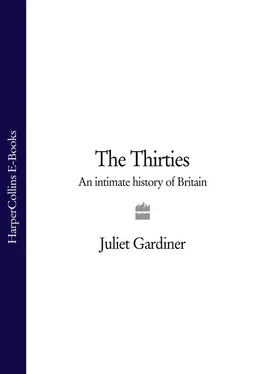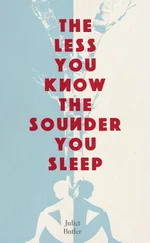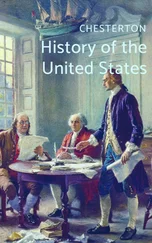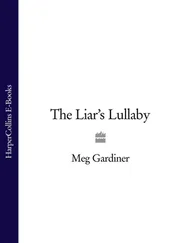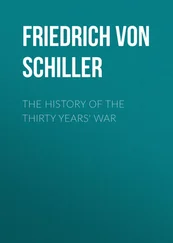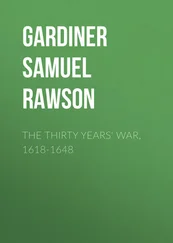One ‘brilliantly successful experiment’ was the translation of an act of a Shakespeare play into Tyneside dialect in a Workers’ Educational Association (WEA) class, while a young unemployed letterpress operator filled his long days by sitting in the parks, swimming or talking with ‘other fellows who are out. I am a member of a library and spend most evenings reading until midnight. I find it the only thing that can take my mind off loneliness, poverty and hunger. My choice varies: Fiction — Priestley, Dell, Orczy, Tolstoy etc. (Russian writers are my favourite.) Educational and interest subjects — philosophy, psychology, travel, Socialism, economics etc.’ George Tomlinson read The Canterbury Tales , Lamb’s Essays , Darwin’s Origin of Species , Wilde’s Ballad of Reading Gaol , ‘or anything that I could get hold of’ as he sat on his toolbox at the pit head having volunteered for a weekend repair shift. An unemployed miner in the Rhondda was an avid reader of Balzac, and it was ‘during my dole days’ that Donald Kear in the Forest of Dean ‘became a compulsive reader. I read anything and everything that came my way, from Jack London and Anatole France to medical dictionaries and odd volumes of electrical engineering encyclopaedias.’ Kear also listened to ‘weekly talks on the radio addressed to the unemployed by a man called John Hilton’. Hilton, a working-class autodidact with a trade union background, was appointed the first Montagu Burton Professor of Industrial Relations at Cambridge in 1931. He was a prolific journalist and broadcaster with an informed and compassionate interest in the plight of the poor. ‘I came to have a great respect and liking for him,’ recalled Kear. ‘His was the only sympathetic voice the unemployed ever heard. He recommended reading as a pastime for us. “Long way ahead in the future,” he said, “someone will want to know where you got your know-how, your handiness with words, and you’ll tell ’em you were unemployed in the ’30s and you did a lot of reading.”’
‘DON’T BE DEPRESSED IN A DEPRESSED AREA. GO TO THE PICTURES AND ENJOY LIFE AS OTHERS DO’ urged a cinema poster outside the Memorial Hall cinema (named in memory of the dead of the First World War, but known locally as ‘the Memo’) at the Celynen Collieries and Workingmen’s Institute at Newbridge in South Wales. The inter-war years were the great decades of cinema-building, with Egyptian, Graeco-Roman, Byzantium, rococo and baroque extravaganzas gradually giving way to ‘dream palaces’ that were streamlined and modern, sinuously curved, plate-glass-decorated, Art Deco buildings that seemed to pay homage to Manhattan, to ocean liners — or to TB sanatoria. Many were huge: Green’s in Glasgow, built in 1927, could seat more than 4,300, while the Bolton Odeon, which opened in 1937, had 2,534 seats and forty-one employees, including usherettes, doormen, chocolate girls and pageboys as well as the expected projectionists and box-office staff.
Cinema-going remained a popular activity for those without work — though the frequency of their visits might be reduced by shortage of money, despite most cinemas selling sixpenny tickets. The reasons were obvious: it was something to do, somewhere warm to go, and a transport out of the dreary reality to romance, humour, drama, thrills. ‘For two and a half hours [the viewer] could live in another world where, invariably, the spirit of adventure was given full play, justice triumphed over injustice, and the hero eventually won through.’ On Merseyside, where unemployment was high, a 1934 survey found that 40 per cent of the population went to the cinema once a week and of them about two-thirds went twice. In Brynmawr in South Wales there were two cinemas, and both did good business throughout the 1930s, while in Greenwich those unemployed who were encouraged to keep diaries estimated that on average they would spend 2.6 hours a week at the cinema, usually going to an afternoon matinee when the seats were cheaper. The Carnegie Report on unemployed youth in Glasgow concluded that ‘attendance at cinemas is the most important single activity’ of those they interviewed, with 80 per cent seeing at least one film a week, and a quarter of those going more frequently. This was not, the report considered, altogether for the good: ‘It was perhaps inevitable, but none the less unfortunate, that many acquired a habit of attending the cinemas regardless of the standard of the films … The harmful effects of indiscriminate cinema attendance are obvious. Young men may come to accept their experiences vicariously. If their only mental sally into adventure comes while they are sitting in a comfortable seat, the enthusiasm and spirit for personal action will soon disappear.’ It was hoped that ‘increasing endeavour’ would be made by the film industry ‘to develop a high standard of artistic appreciation’.
Not all cinemas were of such magnificence as the lavish new ‘dream palaces’: while the patrons of Tooting in South London might watch their films in a building that was a simulacrum of the Doge’s Palace in Venice (with a nod to the cathedral at Burgos), the unemployed in the Rhondda Valley were more likely to have their silver screen set up in a Miners’ Institute, or a ‘fleapit’ or ‘bug house’ unmodernised since its erection possibly before the First World War — the ‘Memo’ in Newbridge was an exception, seating seven hundred people and decorated with both Art Nouveau and Art Deco flourishes, and murals depicting ‘industrial scenes with miners toiling underground’.
Cinemas in Miners’ and other Institutes were run by committees that bargained with the film distributors to get the best prices for the films they wanted to show, kept seat prices down — fourpence was not unusual, and at Mardy Workingmen’s Institute in the Rhondda, where unemployment was very high, customers were asked to pay what they could afford — and also kept a close watch over what films the patrons watched. Most favoured films with a social message, such as Broken Blossoms (1919), a depiction of slum life, though they also responded to customer demand by showing comedies like the nihilistic (and hugely popular) Marx Brothers’ A Day at the Races (1937) or Shirley Temple’s Bright Eyes , which was screened ‘twice nightly with matinee showings for adults on Thursday afternoons and Saturdays for children’ in October 1935. Moreover, in communities where most social activities — the pub, the billiard hall, the Miners’ Institute — were organised exclusively for men and either forbade entry to women or made them entirely unwelcome, the cinema was somewhere a woman could go and enjoy herself away from the confines of the home: though while a number of the films shown at Cwmllynfell Miners’ Welfare Hall cinema, for instance, such as the swashbuckling The Prisoner of Zenda (1937) or American musicals, were unisex in their appeal, an awful lot were clearly ‘boy’s own’ adventures aimed at a male audience.
In the nineteenth century miners’ pay had commonly been docked by a penny or two in the pound to pay for their children’s education, and when universal free education was introduced this money was redirected to miners’ institutes, which were also partly funded by the colliery owners, and in which many fine libraries were collected. Following the recommendations of the 1920 Sankey Commission into coalmining, a Miners’ Welfare Fund was established to provide indoor and outdoor entertainment, financed by a levy on colliery owners, and for the first time on the royalty owners (those who owned the land on which the mines were sunk), as well as mineworkers. The fund was administered by a Miners’ Welfare Committee on which representatives of all interests sat. This money was used to fund pit-head baths (despite the fact that, according to evidence given to the Coal Industry Commission, wives regarded it as their duty and privilege to wash their husbands’ backs and to see that they had their hot bath before the kitchen fire), build or improve institutes, and provide scholarships and libraries. Only about thirty institutes had a cinema (the jewel in the crown was Tredegar’s Workmen’s Institute, which had an eight-hundred-seat cinema, a film society and hosted a series of celebrity concerts, with the top-price seats costing three shillings). Some were little more than a collection of huts, but all played an important role in the life of the community, offering evening classes and lectures, concerts, theatres and dances, debating societies, gymnastics, photography laboratories and amateur dramatics, and hosting political and trade union meetings, travelling theatrical and opera companies and eisteddfodau (Welsh cultural festivals). This strong ethos of education and improvement as well as entertainment led them to be referred to in South Wales as ‘Prifysgol y Glowyr’ (the Miners’ University), and influenced the choice of films shown in the cinemas, the books on loan in the libraries, and the periodicals lying around in the reading rooms.
Читать дальше
